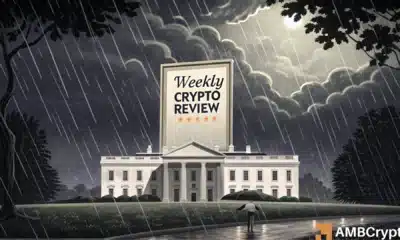Cardano’s Hoskinson believes these two factors can spur next-gen DeFi

Despite being a relatively new space, DeFi has quickly grown to become more appealing. What’s more, projects like Solana and Polygon have grown to compete with Ethereum. Recently, Cardano also brought DeFi smart contracts onto its platform after an Alonzo hard fork event.
According to Founder Charles Hoskinson, however, DeFi is in an economic cycle where the market is having a tough time pricing its value. During a recent interview, he claimed,
“I think DeFi is in a bubble and it’s always what happens — NFT and DeFi are the latest.”
The exec also compared it to the Initial Coin Offering (ICO) revolution of 2017. Worth noting, however, that Hoskinson was quick to clarify that the DeFi bubble “doesn’t necessarily mean that’s a bad situation.” Instead,
“You have new projects that have very small development teams, not a lot of liquidity, and they come out worth a billion dollars.”
Realizing its potential, banks and financial institutions are also betting big on the DeFi space. According to recent estimates, DeFi could see an influx to the tune of $1 trillion in the coming years from institutional investors. That is if the top 100 banks put at least 1% of their assets under management (AUM) into DeFi.
But, should they? Well, the consensus is yes. For instance, according to Philip Gradwell, Chief Economist at Chainalysis,
“DeFi is the logical next step for investors into crypto.”
Chainalysis has also found that large investors are behind the growth of DeFi adoption. It has been termed as “one of the fastest-growing and most innovative sectors” of the crypto-ecosystem, especially in developed countries like the United States.
What else DeFi needs to kick off its next phase?
IOHK CEO Hoskinson pointed out two things that could accelerate DeFi adoption,
“First off, you need to have a Dapp store… The other thing is we need to start thinking about cross-chain in DeFi.”
Here, by Dapp store, Hoskinson meant something like Google Play or iOS store. Interestingly, Hoskinson also believes that the “next generation of DeFi is up for grabs,” concluding from the SEC-led crackdown.
Last month, SEC Chair Gary Gensler alluded to bringing DeFi under regulatory purview. Bureaucracy, in the exec’s opinion, will lead to “better support for whatever regulation comes” as “new DeFi protocols will be constructed to compete with them.”
But, not all will do well in this “second wave of DeFi.” Apart from cost predictability,
“The winners of the future in the DeFi space are going to have liquidity and interoperability, the ability to move multi-chain.”






